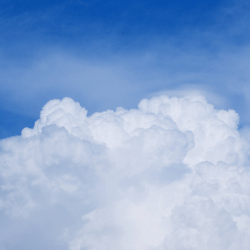For The Best Posting Times, see our main page here.
Why Timing Matters for Engagement
Understanding when to publish content can transform engagement rates. Social media algorithms prioritize fresh content, making timing crucial. Similarly, emails sent at strategic hours can significantly impact open rates.
For example, a retail brand found that posting at 7 PM on weekdays led to 40% higher engagement than morning posts. This simple shift improved conversions and reach. Therefore, knowing The Best Posting Times gives businesses an edge.
The Best Posting Times for Social Media
Each platform operates uniquely, making customized timing essential. Below are optimal posting windows based on research:
- Facebook: Weekdays between 9 AM and 1 PM see the highest engagement.
- Instagram: Midday and evenings (11 AM–1 PM, 7–9 PM) work best.
- Twitter (X): Mornings (8–10 AM) and lunch hours (12–1 PM) drive higher reach.
- LinkedIn: Business hours (8 AM–4 PM) attract professional audiences.
- TikTok: Evenings (6–10 PM) achieve strong interaction.
However, industry trends also influence engagement. Fashion brands, for instance, might succeed with Instagram evening posts, while B2B firms perform better on LinkedIn in the morning.
Email Marketing and The Best Posting Times
Email campaigns depend on strategic delivery. Studies show that emails sent on Tuesdays and Thursdays perform best, particularly between 9–11 AM or 1–3 PM. Sending on weekends generally leads to lower open rates.
Similarly, segmented audiences influence timing. B2C emails get more attention in the evenings when customers relax, while B2B audiences engage during typical work hours.
How Blog Post Timing Affects SEO
Search engines value fresh content, so blog publish times can affect visibility. Posting during peak search hours—typically early mornings on weekdays—allows quicker indexing.
For example, a marketing firm that shifted its blog schedule to Mondays at 8 AM noted a 20% increase in organic traffic. This simple optimization aligned with reader habits, leading to better results.
Factors That Influence The Best Posting Times
Several elements impact the ideal time to post, including:
- Audience Location: Global brands must consider time zones for maximum reach.
- Industry Specifics: A gaming company posting at night differs from a financial firm posting in the morning.
- Content Type: Short promotions might succeed in the afternoon, while in-depth articles perform better in the morning.
- Trial and Testing: Analyzing past performance data helps refine strategies.
Identifying patterns ensures timing adjustments lead to continued growth.
How to Determine The Best Posting Times for Your Brand
Every audience behaves differently, making customized timing essential. To find the most effective schedule, try these tactics:
- Analyze Insights: Use social media and website analytics to see when engagement peaks.
- Experiment With Timing: Run A/B tests to compare performance at different hours.
- Study Competitors: Observe when industry leaders post to spot trends.
- Survey Your Audience: Asking subscribers and followers can provide insights on preferred schedules.
Adjusting based on data prevents missed opportunities.
Common Mistakes in Posting Schedules
Many businesses struggle with timing due to common mistakes, including:
- Ignoring Audience Behavior: Posting at convenient times for creators rather than consumers.
- Neglecting Platform Differences: Using the same posting time for every channel.
- Overly Frequent Posting: Flooding feeds can harm engagement rather than improve it.
- Failing to Adapt: Posting habits should shift with user trends.
Avoiding these errors ensures brands remain effective and relevant.
FAQs on The Best Posting Times
Does posting at the wrong time affect engagement?
Yes, timing significantly influences visibility. If a post goes live when users are offline, engagement may drop. Adjusting for audience activity improves results.
How often should I change my posting schedule?
Reevaluating every few months helps businesses stay aligned with trends. Social media algorithms and audience habits shift, so frequent assessments are beneficial.
Is there one universal perfect posting time?
No, ideal timing varies by platform, industry, and audience. Testing and analyzing performance data is the best way to determine personalized strategies.
Can automation tools help with timing?
Absolutely. Scheduling tools like Buffer, Hootsuite, or Later allow precise timing based on audience insights, improving reach without manual effort.
Does reposting content at different times work?
Yes, re-sharing content in new time slots can capture audiences who missed it initially, boosting engagement over time.
Mastering The Best Posting Times requires experimentation, analysis, and flexible strategies. The right timing ensures content reaches the right audience, leading to higher interaction and visibility.
Follow us on Facebook here.

